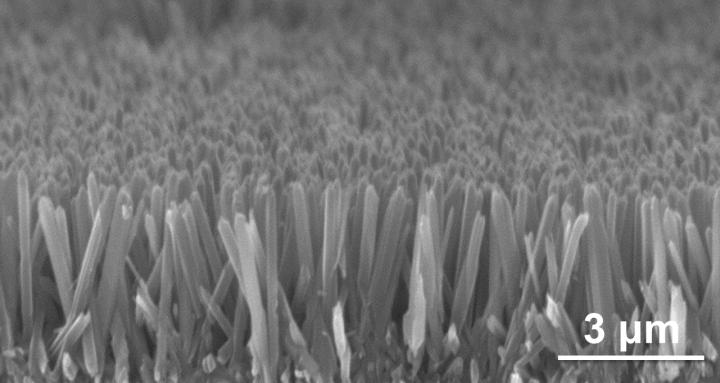Engineers at Penn State University have developed a new type of flexible nanowire array that could be used in wearable cooling devices for firefighters or athletes.
The system relies on the electrocaloric effect whereby a material shows a reversible temperature change under an applied electric field. Until now, materials with this property have either been too rigid to embed in clothing, or unsafe for humans due to toxicity or the high voltage required for their action.

"Most electrocaloric ceramic materials contain lead," said Qing Wang, professor of materials science and engineering at Penn State. "We try not to use lead. Conventional cooling systems use coolants that can be environmentally problematic as well. Our nanowire array can cool without these problems."
Wang and his colleagues’ research, described in the journal Advanced Materials, saw the team develop vertically aligned ferroelectric nanowires in two stages. First, titanium dioxide nanowires were grown on fluorine-doped tin oxide-coated glass. A template was used so that all the nanowires grew perpendicular to the glass surface with a uniform height. The researchers then infused barium and strontium ions into the nanowires and applied a nanosheet of silver to act as an electrode.
The resulting array can then be transferred from the glass to any other substrate, including fabric. Using an electric field of 36 volts the array can cool by about 3°C. According to the researchers, a 500g battery pack the size of an iPad could power the material for approximately two hours. While that kind of weight would not be ideal for a marathon runner, a Formula One driver or firefighter could carry it with relative ease, and the relatively low voltage makes the device safe to wear.
"This low voltage is good enough for modest exercise and the material is flexible," said Wang. "Now we need to design a system that can cool a person and remove the heat generated in cooling from the immediate area."




Nanogenerator consumes CO2 to generate electricity
Whoopee, they've solved how to keep a light on but not a lot else.